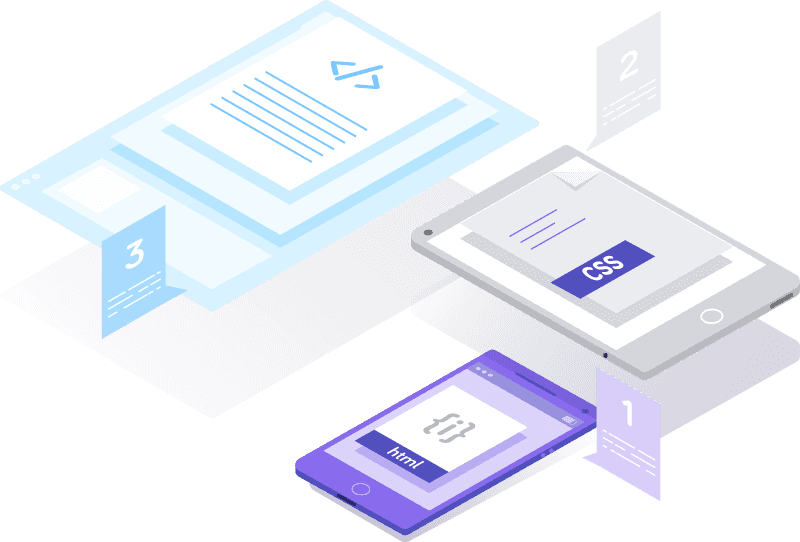IT Training
Thought Process is a Training & Consulting Service Provider company offers Training for indivisual and Corporate Groups .
IT Training like SAP BASIS, HANA, SAP ABAP, SAP FICO, SAP HR, Microsoft Technology, Open source, Software Testing, Database ,IT Service Management, Information Security & Networking

100’s of Training Modules
Technology Related
IT Training like SAP BASIS, HANA, SAP ABAP, SAP FICO, SAP HR, Microsoft Technology, Open source, Software Testing, Database ,IT Service Management, Information Security & Networking
SAP BASIS & ADVANCE
Duis egestas aliquet aliquet. Maecenas erat eros, fringilla et leo eget, viverra pretium nulla.
Advance Python Programming
Duis egestas aliquet aliquet. Maecenas erat eros, fringilla et leo eget, viverra pretium nulla.
LINUX
Duis egestas aliquet aliquet. Maecenas erat eros, fringilla et leo eget, viverra pretium nulla.
Software Testing
Duis egestas aliquet aliquet. Maecenas erat eros, fringilla et leo eget, viverra pretium nulla.
AZURE & AWS BASIS
Duis egestas aliquet aliquet. Maecenas erat eros, fringilla et leo eget, viverra pretium nulla.
ORACLE DBA &RAC & CLOUD
Duis egestas aliquet aliquet. Maecenas erat eros, fringilla et leo eget, viverra pretium nulla.
Intro to C++
Duis egestas aliquet aliquet. Maecenas erat eros, fringilla et leo eget, viverra pretium nulla.
Microsoft Technology
Duis egestas aliquet aliquet. Maecenas erat eros, fringilla et leo eget, viverra pretium nulla.
Course Description
Explore HereMs Excel 2016, PowerPoint 2016, Office 365
| Getting Started with Microsoft Office Excel 2016 Working with Functions Analyzing Data Using PivotTables and PivotCharts Using Lookup Functions and Formula Auditing Sharing and Protecting Workbooks Visualizing Data with Charts Automating Workbook Functionality |
| Getting Started with PowerPoint 2016 interface Working with Slides Applying Transitions Inserting Pictures Animating Text and Objects Inserting Audio/Video Editing Charts Editing Tables |
| Microsoft Word for Office 365 (Desktop or Online) Microsoft Excel for Office 365 Microsoft Outlook for Office 365 PowerPoint for Office 365 Working with Microsoft Teams |
ORACLE 12C DBA
| Enhanced Features Performance Systems Container Database Multitenant Architecture CDB and PDB Structures Create a Multitenant Container Database How to Manage Multi Container Databases Managing Tablespaces |
| Oracle App R12 |
| Oracle Application Architecture Application Object Library Working with multiple concurrent programs Report development Inventory Module Form Customization Inbound & Outbound Interfaces Interfaces and conversions Flex Fields Workflow builder XML Publisher AIM documentation |
| PL & SQL - Postgre Sql |
| Exploring database List databases on this database server Reading the Fine Manual (RTFM) What are the current configuration settings? Which parameters are at non-default settings? Updating the parameter file Starting the database server manually Stopping the server safely and quickly Preventing new connections Restricting users to just one session each Handling objects with quoted names Generating test data Loading data from a spreadsheet Adding/Removing the columns of a table Adding/Removing schemas Moving objects between schemas Adding/Removing tablespaces Monitoring & Diagnosis Controlling automatic database maintenance Avoiding auto freezing and page corruptions Avoiding transaction wraparound Removing old prepared transactions Finding slow SQL statements Collecting regular statistics from pg_stat* views Finding what makes SQL slow Backup & Recovery Understanding replication concepts |
| SQL DBA |
| SQL DBA Activities DB Repairs, Security Management Log Shipping & Replication SQL Server & DB Maintenance Migrations Mirroring, Common Errors Tuning Tools Clustering Incident Management |
Operating Systems
| Window Server |
| Windows server 2016 Installation & storage with Windows server Identity with Windows server Networking with Windows Server |
|
Linux Administration |
| Linux installation and initialization Linux user administration, services and utilities Server configuration, shell scripting and Kerberos NFS with RPC letting remote hosts to mount file systems SMB and SMTP service and virtualization Advanced networking concepts and security Database configuration and kickstart installation |
| MacOS Support Essentials 10.13 |
| Installation and Configuration User Accounts File Systems and Storage Data Management Apps and Processes Network Configuration Network Services System Management |
Software Testing
| Selenium |
| Introduction to automation testing Selenium components Supported Technologies Selenium installation Intrdcution to webdriver Java components Archtecure of Testng Webdriver interface methos |
|
Loadrunner
|
| Introduction to Loadrunner Scenarios Run-time Settings Scheduling Scenarios performance monitors to achieve load test goals analyzing results |
| QTP |
| Manual and Automation testing Test Automation Automation testing process QTP installation QTP tool Debug viewer QTP Framework Record and Run test in qtp QTP Objects Object Repository Action and its types Types of Synchronisation VB Scripting |
Web Developement
| Basics of Website Development - HTML / CSS / PHP / Bootstrap |
|
Understanding & using HTML Introduction to HTML Introduction to Bootstrap |
| Wordpress |
| Getting Started Pages and Posts Plugins in WordPress Some Useful free WordPress Plugin WordPress Themes |
| Magento |
| Magento Structure Root directory and use Templates and Layout URL rewrites Cron Setup Event observer Attributes management Rewriting the core Access control level Configuration of API |
Information Security
| Cyber Security |
| There are five types of cyber security Critical infrastructure security Application security Network security Cloud security Internet-of-Things (IoT) security Use OSI and TCP/IP models Protocols in OSI and TCP models Understanding IPv4 addressing Understanding IP6 addressing Describe the operation and benefits of using private and public IP address Classifying network addressing Understand physical security Site security, computer security, removable devices and drives, access control, mobile device security and keyloggers Understand internet security Browser security settings; secure websites Understand permissions Understand password policies Understand malware Understand malware Web Application Security Assessment WASA Denial-of-service Session hijacking Hacking web servers Evading IDS, Firewalls and Honeypots |
| Introduction to Ethical Hacking |
| Introduction to Ethical Hacking Foot printing and Reconnaissance Scanning Networks Enumeration System Hacking Trojans and Backdoors Viruses and Worms Sniffers Social Engineering Denial of Service Session Hijacking Hacking Webservers Hacking Web Applications SQL Injection Hacking Wireless Networks Hacking Mobile Platforms Evading IDS, Firewalls and Honeypots |
DESIGN SOFTWARE
| Adobe Photoshop |
| Discovering the Tools panel. Accessing tools and their options. Using panels. Customizing your panels. Workspace, Tools, and Panels. Understanding Bridge. Hidden tools |
| Solidworks |
| Sketch Entities Sketch Tools Creating Extrude features Creating Swept features Creating Chamfer Creating Fillet features Inserting Hole Creating Shell Applying Standard Mates Surface Modeling tools Generating Views Creating Dimensions Sheet Metal Design |
| AUTOCAD |
|
3D COORDINATES
|
|
REVIT ARCHITECTURE |
| WALLS FLOORS, ROOFS & CEILINGS SYSTEM FAMILY EDITING WINDOW, DOOR & COMPONENT USE SITE DESIGN WORKSHARING PHASING MASSING TOOLS & THE BUILDING MAKER SCHEDULES & LEGENDS SHEET COMPILATION & PUBLICATION |
| Primavera |
| PPM Concepts Organizational Breakdown Structure (OBS) Enterprise Project Structure (EPS) Projects Constraints in a Project. Work Breakdown Structure (WBS) Activity Codes/Project Code Work Products & Documents Resource Sheet Preparation Resource Assigning Analysis Resources Updating Progress Calculating earned Value analysis |
| IOS & MOBILE APP DEVELOPEMENT |
| IOS Development Understanding iOS App Swift Overview Foundation Framework Application life cycle UIControls Autolayout Ways to Organize Content Understading iPad elements Working with Web View Memory Management Networking Animation Code Quality Design Pattern in iOS applications |
| Introduction to Java and Android Systems Programming and JNI Concepts 3D graphics in OpenGL and Android Widget Android Networking Complete App Development |
IOS Development
| IOS Development Understanding iOS App Swift Overview Foundation Framework Application life cycle UIControls Autolayout Ways to Organize Content Understading iPad elements Working with Web View Memory Management Networking Animation Code Quality Design Pattern in iOS applications |
Android Development
| Introduction to Java and Android Systems Programming and JNI Concepts 3D graphics in OpenGL and Android Widget Android Networking Complete App Development |
Getting started with DevOPs (Git, Docker, Jenkins)<br />
| Growing demand for rapid software development across industries is expected to boost the DevOps market growth You can Get In-Depth Practical Knowledge on DevOps Process from our subject experts like Continuous Integration, Continuous Testing & Monitoring Tools. Our DevOps Training Course you will equip you with complete knowledge on Docker, Puppet, Chef, Jenkins Introduction to DevOps What is DevOps? Introduction to Docker Introduction to Jenkins |
Getting started with Kubernetes<br />
| 1.Introduction to Kubernetes 2.Kubernetes Features 3.Docker Swarm vs Kubernetes 4.Kubernetes Architecture |
Big Data Hadoop and Spark For Developers<br />
|
These courses are one of the best ways to equip oneself with all the Big Data skills! Introduction to Big Data and Hadoop |
Getting started with Kubernetes<br />
| 1.Introduction to Kubernetes 2.Kubernetes Features 3.Docker Swarm vs Kubernetes 4.Kubernetes Architecture |
Programing Languages
| Programming With Java What Is Programming ? Why We Need Programming Simple Programs and Development environment Datatypes Literals Variables Various Operators Blocks of code Statements Or Loops In Java Creation And Declaration Of Array In Java Java Classes and Java Objects Java Class Inheritance Java Abstract Class Java Interface Multithreaded Programming |
| Basics – HTML CSS JavaScript jQuery AJAX HTML 5 Angular JS NODE JS MONGO DB |
| Introduction to HTML. Introduction to CSS. Introduction to JavaScript. Working with Objects. Angular JS Basics. Angular Expressions. Filters. Session 8: Directives. |
| Introduction to Node.js Node.js Platform Setup The Callback Pattern Modules and npm Error Handling Buffers/Streams Express.js/Socket.io Connecting to Databases |
| Introduction to React JS React UI Frameworks and Styling Components in React JS React JS Architecture Redux and Advanced React Concepts React Hooks(The way of writing code in React in the Future) |
| An Introduction to R. Introduction to the R language. Programming statistical graphics. Programming with R. Simulation. Computational linear algebra. Numerical optimization. |
| Object-Oriented Fundamentals Built-in Operators and Control Constructs C++ Functions Classes and Objects Base Class Pointers and References Abstract Base Classes Containment Base and Derived Relationship Template Functions Exception Hierarchies Design Pattern |
| This training provides a hands-on introduction to the Python language covering object-oriented and functional programming techniques Introduction to Python: What is Python? Origin and intentions. Differences to other programming languages. Using the interactive Python shell Editing and starting Python scripts Fundamentals: Variables, basic data types and assignments. Operators and expressions. Conditional Statements: The details of the if statement and the conditions Loops: While and for-loops Data Types: Lists, Tuples and Dictionaries Lists and stacks Functions and recursive functions File Handling Lambda Expressions List Comprehension Module Tests Generators Object Oriented Programming with Python Python GUI's with Tkinter or Qt (optional |
| Qt Introduction Basic Building of Qt App Qt Framework Architecture All visual controls Memory Management in Qt UI Designing with Qt Designer Designing a responsive UI Widgets and Dialogs Writing custom widgets Introduction to QT threads Qt code Debugging Qt Troubleshooting QML Building blocks |
Cloud Computing
| Google Cloud |
| Core Infrastructure fundamentals of Google Cloud Managing and provisioning Google Cloud solutions Implementing the Google Cloud architecture Various GCP products and services Analyzing data by running queries on GCP Developing and deploying Google Cloud solutions Managing GCP services using app, CLI and console Machine Learning services in GCP |
| AWS certified Solution Architect content |
| IntroductionIAM S3, Glacier & CloudFront EC2Route53Databases VPC – Lab NAT – Lab SQS/ SWF/ SNS Well Architected Framework |
| AWS Developer Associate |
| Introduction to Azure Solutions Architect and its principles Basics of Cloud Computing and its usefulness Problem identification and data handling in cloud computing What is Cloud architect and how to maintain it Instructor led sessions on cloud Azure Solutions Architect |
| Azure App Service Web Apps Develop solutions that use blob storage Cosmos DB storage secure cloud solutions event-based solutions optimize Azure solutions |
| Source Control enterprise DevOps Managing application config & secrets Integration in an Azure DevOps Pipeline Manage security and compliance Infrastructure and Configuration Azure Tools Security in Infrastructure Planning for DevOps Artifacts and Tools |
| OpenStack is an open source software that allows for the deployment and management of a cloud infrastructure as a service (IaaS) platform. OpenStack supports both private and public cloud deployments. It fulfills two main requirements of the cloud: massive scalability and simplicity of implementation. OpenStack is highly configurable: the user can choose whether or not to implement several services offered by the software. The configuration of each component is also up to the user and is easily made through the application programming interface (API) the tool provides. Therefore, there are many different ways to use OpenStack, which makes it a flexible tool that is able to work along with other software. Another reason to adopt OpenStack is that it supports different hypervisors (Xen, VMware or kernel-based virtual machine [KVM] for instance) and several virtualization technologies (such as bare metal or high-performance computing). |
Trending Technologies
| Data Science |
| Overview of Analytics Basic Python Data Manipulation with Python Recap + Q/A + Assignment Submission Data Visualization with Python Featured Engineering – Structured Data Hypothesis Testing case study & Assignment discussion SQL (Optional) Recap & Assignment Submission & Q/A Linear Regression (Preparation ) with Python |
| Machine Learning |
| Introduction to Machine Learning Creating a Machine Learning Model Data Preparation and Exploration Regression Classification Evaluation of Classification Models Unsupervised Learning - Clustering Dimensionality Reduction Reinforcement Learning |
| Blockchain |
| Understanding Blockchain Case Study of Blockchain : Bitcoin Cryptocurrency Ethereum VS bitcoin Key Properties of smart Contracts Ethereum Solidity Hyperledger Architecture Hyperledger Fabric |
| IOT (Internet of Things) |
| Introduction to IoT What is IIoT Industry 4.0 – The fourth industrial revolution, Smart factories Convergence of IT and OT Industrial control systems and automation, Sensor driven computing and Industrial analytics Internet architecture and practice applied to industrial settings Security, Governance and Operations |
Data Warehouse, BI & ETL Tools
| Data warehouse |
| Data warehousing Life cycle Source Architecture Staging Area Targets Analysis & Reporting Data Modeling, ETL fundamentals Data Visualisation |
| QlikView |
| Introduction QlikView Handling Sheets & Sheet Objects Creating a line chart Working with drill-down functionality Adding new sheet objects Opening the document The multi box The text object The line/arrow object Selection Objects and Bookmark Objects Setting Document Properties Concatenating Tables Loading Cross Tables Creating a theme security tables |
| Power BI |
| INTRODUCTION TO POWER BI REPORT VISUALIZATIONS POWER BI REPORTS, FILTERS CHART AND MAP REPORT PROPERTIES POWER QUERY HIERARCHIES and DRILLDOWN REPORTS Data Analysis Expresssions PowerBI Cloud Architecture Power BI Cloud Interface POWER BI REPORTS |
| TALEND |
| Data Modeling Multidimensional Data Modeling Understanding Talend Talend Installation Talend Key Features Data Management Techniques DataSource Connection Talend Routines/Functions Data Transformation Working with Metadata Graphical Interface of Talend |
| Tablue |
| Understanding the Tableau workspace Data Analysis,Filtering and Quick Filters String Functions Custom Aggregations Formatting your Visualization Interactive Dashboard Packaged Workbooks |
Storage
| NetApp |
| NetApp storage systems are hardware- and software-based data storage and retrieval systems. They respond to network requests from clients and fulfill them by writing data to or retrieving data from disk arrays. They provide a modular hardware architecture running the Data ONTAP operating system and WAFL (Write Anywhere File Layout) software. Data ONTAP is the operating system for all NetApp storage systems. It provides a complete set of storage management tools through its command-line interface, through System Manager, and through remote management devices such as the Service Processor (SP) and the Remote LAN Module (RLM). LEARNING OUTCOMES: Taking this NetApp Storage training course will give you the advanced level knowledge and hands-on skills you need to configure, manage and maintain NetApp Clustered Data ONTAP, the 'Number One Storage Operating System in the world' as listed by IDC. The course provides a structured approach which shortcuts your path to learning NetApp storage to an expert level. |
Networking
| CCNA |
| Our Cisco CCNA course is designed to get the placement in good MNC companies as quickly as once you complete the ccna networking training course. Our Cisco CCNA trainers are Cisco certified experts and experienced working professionals with hands on real time multiple CCNA projects knowledge. We have designed our Cisco CCNA course content and syllabus based on students requirement to achieve everyone's career goal. In our Cisco CCNA training program, you will learn CCNA certification benefits, Configuration, verify and troubleshoot switch, Implement an IP addressing scheme and IP Services to meet network requirements, Configure, verify, and troubleshoot Cisco router, Implement, verify, and troubleshoot NAT, certification preperation, Cisco CCNA real time project. LEARNING OUTCOMES: As Enterprises migrate toward controller based architectures, the role and skills required of a core network engineer are evolving and more vital than ever. To prepare for this network transition, the CCNA Routing and Switching certification will not only prepare you with the knowledge of foundational technologies, but ensure you stay relevant with skill sets needed for the adoption of next generation technologies. |
| CCNP |
|
Cisco Certified Network Professional (CCNP) Routing and Switching certification validate the ability to plan, implement, verify and troubleshoot local and wide-area enterprise networks and work collaboratively with specialists on advanced security, voice, wireless, and video solutions. The CCNP Routing and Switching certification is appropriate for those with at least one year of networking experience who are ready to advance their skills and work independently on complex network solutions. Those who achieve CCNP Routing and Switching have demonstrated the skills required in enterprise roles such as network engineer, support engineer, systems engineer, or network technician. The routing and switching protocol knowledge from this certification will provide a lasting foundation as these skills are equally relevant in the physical networks of today and the virtualized network functions of tomorrow. LEARNING OUTCOMES: |
VMware Technologies
| VMware Network Virtualization NSX6 |
|
VMware NSX is a software networking and security virtualization platform that delivers the operational model of a virtual machine for the network. Virtual networks reproduce the Layer2 - Layer7 network model in software, allowing complex multi-tier network topologies to be created and provisioned in seconds. LEARNING OUTCOMES: |
| VMware App Volume |
|
VMware App Volumes is a portfolio of application and user management solutions for Horizon, Citrix XenApp and XenDesktop, and RDSH virtual environments. These solutions take desktop and application environments to the next level by providing radically faster application delivery, unified application and user management, while reducing IT costs by up to 70%. LEARNING OUTCOMES: |
| VMware Horizon View 7.6 And App Volume |
|
VMware Horizon 7 enables IT departments to run remote desktops and applications in the datacenter, and deliver these desktops and applications to employees as a managed service. LEARNING OUTCOMES: |
| VMware Datacenter Virtualization 7 |
|
This course features intensive hands-on vmware virtualization course training that focuses on installing, configuring, and managing VMware vSphere® 6.7, which includes VMware vSphere® 6.7 and VMware vCenter Server® 6.7. This course prepares you to administer a vSphere infrastructure for an organization of any size. It is the foundation for most other VMware technologies in the software-defined data center. LEARNING OUTCOMES: |
| VMware VSAN Specialist |
|
VMware vSAN (formerly Virtual SAN) is a hyper-converged, software-defined storage (SDS) product developed by VMware that pools together direct-attached storage devices across a VMware vSphere cluster to create a distributed, shared data store.The course gives you an deep insight into VMware VSAN and makes you completely industry ready. |
| Citrix Netscaler |
| Citrix NetScaler is an all-in-one web application delivery controller (ADC) that makes applications run up to five times faster, cuts web application ownership costs with server offloading, and makes sure that applications are always available with its application load balancing capabilities. LEARNING OUTCOMES: The objective of the Citrix NetScaler 11 Essentials and Networking course is to provide the foundational concepts and skills necessary to implement, configure, secure, monitor, optimize, and troubleshoot a Citrix NetScaler system within a networking framework. This course is designed specifically for students who have limited or no previous NetScaler experience. Students will have access to hands-on exercises within a virtual lab environment. This course is based on the Citrix NetScaler 11 product, but the skills and fundamental concepts learned are common to earlier product versions. |
| Citrix Certified Professional |
|
CCP - V validates the skills experienced IT solution builders, such as engineers and consultants, need to install, configure and roll out common XenDesktop solutions. LEARNING OUTCOMES: |
| Citrix Certified Expert |
| Virtualization certifications focus on the design, deployment, and management of XenDesktop 7 solutions. Comprehensive requirements provide a streamlined, efficient path for validating your skills. CCE-V validates the skills experienced IT solution designers, such as architects, engineers and consultants need to assess and design practical XenApp and XenDesktop solutions. LEARNING OUTCOMES: Citrix certifications are now solutions-based, reflecting the evolving needs of IT professionals and organizations. As a certified associate, professional or expert, you can prove that you have the real-world skills and experience required to deliver successful Citrix solutions. |

Become An IT Expert
Learn by Doing
Practical Training Session With Concept Of Learning By Doing Methodology


Build your portfolio
Our Expertise Trainer Enhance the Skill of Participant that Help to Boost Skill as Well Portfolio.
“
My entire team was prototyping by the end of the first day!
Class aptent taciti sociosqu ad litora torquent per conubia nostra, per inceptos himenaeos. Sed molestie, velit ut eleifend sollicitudin, neque orci tempor nulla, id sagittis nisi ante nec arcu.
Karan, Design Initiative

